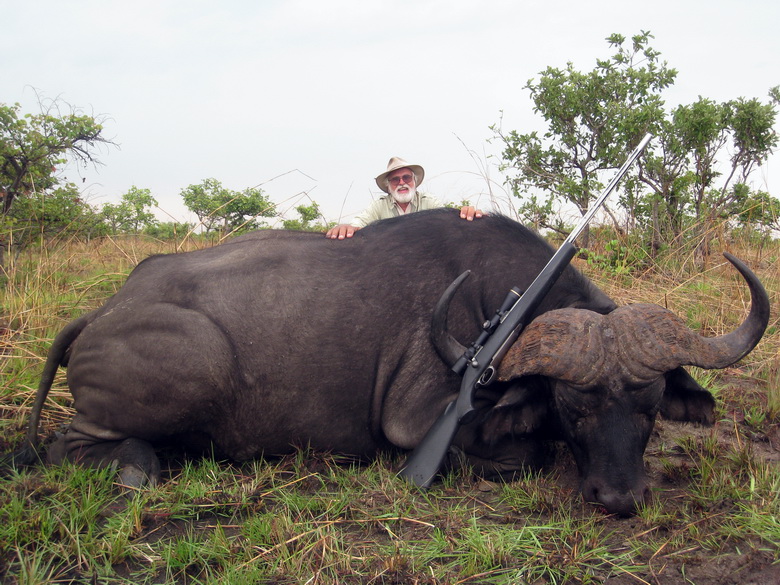

 The Accurate Reloading Forums
The Accurate Reloading Forums  THE ACCURATE RELOADING.COM FORUMS
THE ACCURATE RELOADING.COM FORUMS  Hunting
Hunting  African Big Game Hunting
African Big Game Hunting  East Africa: New Weed a Threat to Wildlife in Serengeti
East Africa: New Weed a Threat to Wildlife in SerengetiGo  | New  | Find  | Notify  | Tools  | Reply  |  |
| one of us |
East Africa: New Weed a Threat to Wildlife in Serengeti Nairobi — Tanzania may have withdrawn its plan to build a two-lane highway across the northern edge of Serengeti National Park but a new threat to the ecosystem is emerging. This follows the discovery of noxious weeds from Central America that pose a threat to wildlife in the parks. Argemone Mexicana or Mexican poppy is the most dangerous of these invasive species, as it is aggressive. It produces chemicals that prevent other plant growth and is toxic to animals. It can choke all grazing land as well as food crops such as sorghum and millet. Plant scientists said the toxic weed is only eaten by animals when they are starving but with fatal consequences. Other weeds discovered include; daturastramonium, prickly pear or opuntia and custard oil or rhyciuus. Allan Kijazi, director general of Tanzania National Parks Authority (Tanapa) said last week that Tanapa and their Kenyan counterpart are working on ways to eliminate the weeds from the ecosystem. "Unless action is taken immediately to eradicate known infestations in the Serengeti -Maasai Mara ecosystem it is not unrealistic to expect a drastic reduction in wildlife populations as the parthenium population rapidly expands," he said. The Serengeti - Mara ecosystem hosts approximately 70 large mammal species and some 500 different bird species in highly diverse habitats ranging from riverine forests and swamps to grasslands and woodlands. Parthenium (Pathenium hysterophorus)commonly known as "fever few" or "white top," considered one of the world's most dangerous plants has also infested the Serengeti-Masai Mara ecosystem Ahmed Mbugi, manager, Tanapa's outreach programme said movement of thousands of grazing animals makes it easier for parthenium to invade. Mr Mbugi said the displacement of palatable species means that, in time, the available food for wildebeest, zebra, gazelle and the pastoralists livestock will rapidly diminish. Natural Resources and Tourism Minister Ezekiel Maige said the government is aware of the invader plants in Serengeti ecosystem and has developed a group of scientists who are on site to study them. "Once they are done they will come up with a control method," he said. Leo Niskanen, technical Co-ordinator at the International Union for Conservation of Nature Office for Eastern and Southern Africa said these threats emanate mainly from outside the borders of the protected area and have an impact on the entire Serengeti-Mara ecosystem. Mr Niskanen said this highlights the importance of close collaboration between protected area managers in Tanzania and Kenya and the need to involve a broad group of stakeholders -- including the private sector, conservation organisations and government agencies. Tanzania receives an average of 800,000 tourists annually with more than 80 per cent ending up in the Northern circuit stretching from Arusha to Serengeti National park. The world's largest wildlife migration - the annual loop of two million wildebeest and other wildlife across Tanzania's Serengeti National Park and Kenya's Maasai Mara reserve - is a key tourist lure, generating millions of dollars annually. Cheers, ~ Alan Life Member NRA Life Member SCI email: editorusa(@)africanxmag(dot)com African Expedition Magazine: http://www.africanxmag.com/ Facebook: https://www.facebook.com/alan.p.bunn Twitter: http://twitter.com/EditorUSA Avoiding danger is no safer in the long run than outright exposure. Life is either a daring adventure or nothing. ~Keller To be persuasive we must be believable; to be believable we must be credible; to be credible we must be truthful. ~ Murrow | ||
|
| Powered by Social Strata |
| Please Wait. Your request is being processed... |
|
 The Accurate Reloading Forums
The Accurate Reloading Forums  THE ACCURATE RELOADING.COM FORUMS
THE ACCURATE RELOADING.COM FORUMS  Hunting
Hunting  African Big Game Hunting
African Big Game Hunting  East Africa: New Weed a Threat to Wildlife in Serengeti
East Africa: New Weed a Threat to Wildlife in Serengeti

Visit our on-line store for AR Memorabilia

